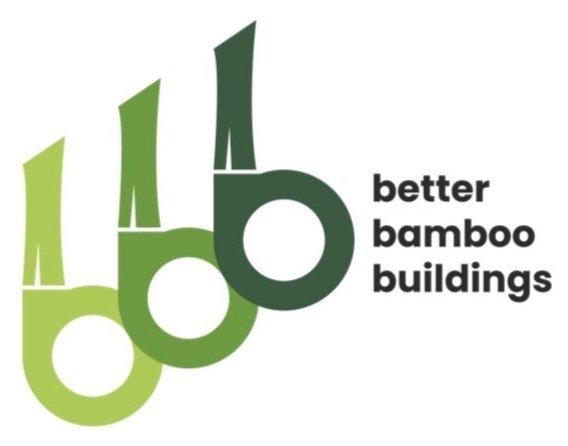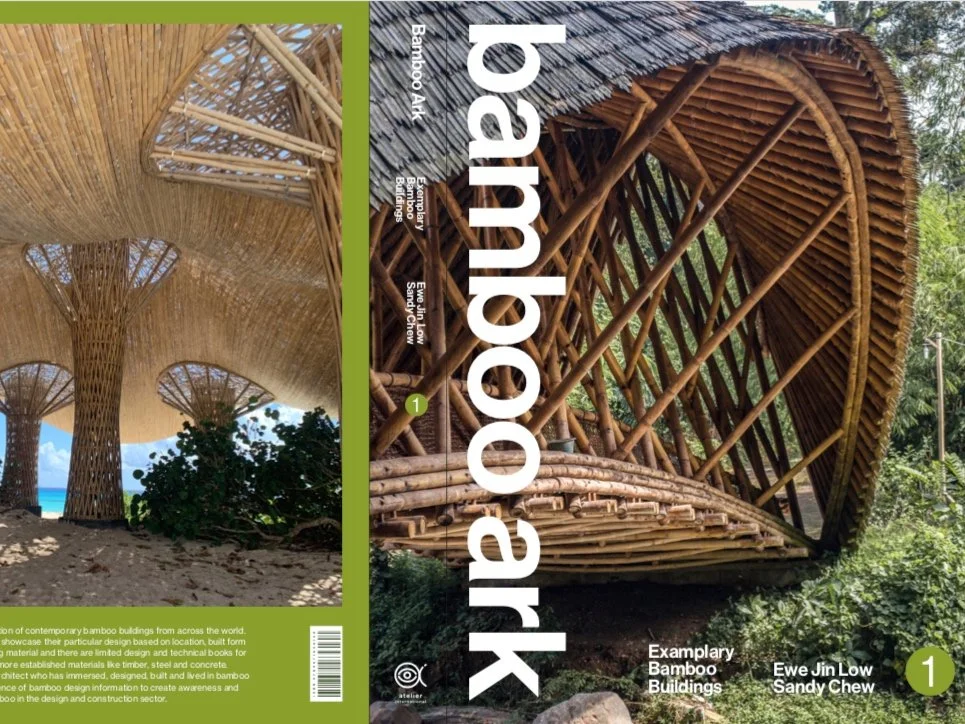The Story of Pinboo Boards
Photo credit - Markus Klietsch.
Jörg Stamm started constructing bridges in 1995 and for the bridge flooring he used formwork made with bamboo mats, where paper was laid onto those mats and then the concrete was poured on top of it. Due to the heaviness of the concrete, deformations in that formwork occurred and Jörg looked into other types of conventional bridge flooring that would allow vehicles to cross over and yet do not have those deflections as in conventional flooring.
Charlie Young at that time had introduced laminated bamboo flooring in the Netherlands and subsequently to other parts of Europe in the early 90’s. He imported the early versions of bamboo flooring from China, where Jacky Hong from Chen Fu was crucial in making the needed machines to process splits, cut them parallel, double circular saws with double blades to speed up the process and then send the splits through a four sided planer.
About 60% of biomass is taken off as sawdust and waste by the squaring off process of a raw split member. which is labour and cost intensive. losing a lot of the initial bamboo thickness. To make a more efficient use of this splits used for floor boards, was thinking all the time about how to optimize this.
In 2002 Jörg met Antonio Giraldo, who just made bamboo splits on a common table saw and took out the nodes with a machete so that the shape was still round. Antonio used a 6mm thick wire to connect through the splits. He hooked the ends and nailed them back into the edge split member as shown by the following sketch. These boards where strong enough to hold the flooring for Jörgs bridges, although they were not as aesthetically pleasing.
Sketch of early Antonio Giraldo floor board design
Jörg has seen similar techniques, using palm sticks instead of wires, and together with Antonio they tried to make a nicer, slightly refined version, using those half inch palm sticks and nailed them through the lined up bamboo slats. That became the first pinboo board.
The term was not branded by Jörg nor Antonio, but rather somebody (Darrell de Boer?) at Jörg’s workshop came up with the name pin and boo. Although the initial idea and name did not come from Jörg, we acknowledge his efforts to refine and systemise existing techniques making pinboo into a strong and beautiful floor product. The beauty of the repeating pattern, belly to belly and back to back gives pinboo boards its particular aesthetics. This special character makes pinboo desirable for not to boohuggers but also people interested in vernacular architecture and in search for the extra touch.
When Jörg introduced this technique to Ibuku/PT. Bamboo Pure in Bali, the team there took this idea forward and developed multiple array of applications and thinner boards for furniture and other uses, ie. 25mm instead of the usual 40cm.
Key elements of pinboo from top to bottom: pin, split, pinboo
The price of these pinboo boards in the making is around 20-25 USD/m2. For instance, 33cm wide, 300cm long and 4cm thick boards are 25 USD, which is equivalent to the price of typical hardwood (most likely illegally logged ) planks that have the same spanning capacity.
There is a recycling aspect in producing pinboo boards. In Jörgs bamboo factory in Colombia, he noticed that almost 30% of incoming bamboo poles are rejected due to crookedness, insect bites, cracks and other irregularities. He converted all the reject poles into splits and started to produce split boards in 2004.
The following series of photos explains the production process of pinboo boards.
3 metre long Guadua bamboo poles ready to be split
Producing bamboo rods with a rod mill
Splits/laths under cover, stacked and ready for production
Pinboo board nailed together with bamboo pins; prior to planing
The real kicker came later when Jörg did the floor at Kapal Bambu Restaurant of the Ecolodge in Bukit Lawang. He wanted to create one big floor, 45m long 15m wide, with the cooperation of Lukas Zollinger. They figured out an interlocking system with finger joints which meant that the boards could be joined to any length. Up to date this is the final stage that has been reached, when it comes to pinboo.
Pinboo floor at Kapal Bambu Restaurant, Bukit Lawang, North-Sumatra
In the years to follow Jörg has used pinboo in many variations such as handrails, spiral stairs, floors, tables and chairs and many more. The only negative thing about pinboo boards he says; they are not very high heel friendly as ladies get stuck in the gaps between the splits!
Pinboo boards interlocked end to end lengthwise
Pinboo door
Pinboo table top
The pinboo board comprise splits/laths that are vertically joined and therefore really strong against bending. Instead of a floor beam support at every 40-50cm, which is necessary for common floor boards, the pinboo boards have a longer spanning capacity requiring support only at centres of 120cm. This will reduce the structural support bamboo content and also make the overall bamboo structure look more lightweight.
Assembly of pinboo boards. This cane done as shown manually or by specially made machinery
The pinboo board is a relevant and notable bamboo construction element that is still being utilised as floor boards, cladding, interiors, furniture-making components in Indonesia, South America and other Asia Pacific countries. For now, there are no major international manufacturers or producers and the production of pinboo floor boards is limited and localised dependent on demand. Does the pinboo board have a future as a product that can be further developed, improved and applied to the many new and emerging bamboo buildings internationally?
Related - Read our very first blog article on Jörg Stamm - bamboo master builder.
Written by : Gilbert Murrer
Co-written and Edited by : Ewe Jin Low



















